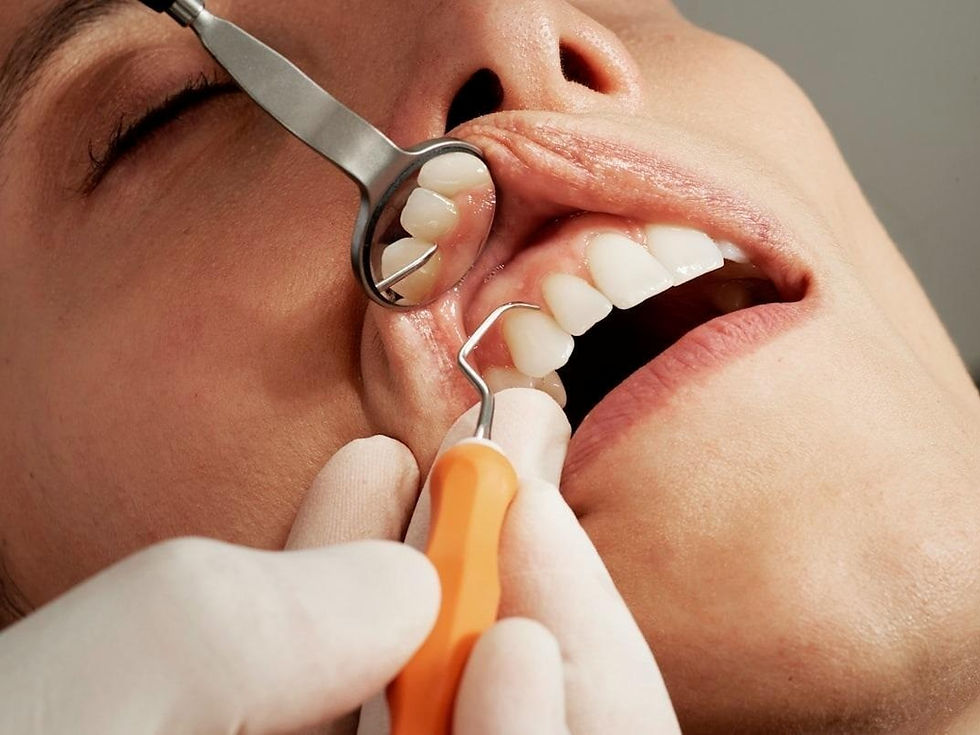The Role of Dental Materials for Infection Control in Dentistry
- trevor8733
- Oct 22
- 3 min read

Infection control remains one of the most critical pillars of modern dentistry. Dental professionals work in an environment where close contact with patients, sharp instruments, and constant exposure to saliva and blood create significant risks of cross-contamination.
Effective protocols and the right materials reduce risks, protecting both patients and providers. Beyond sterilization and personal protective equipment, the selection of dental materials for infection control has a direct impact on clinical safety and long-term patient outcomes. Below, Dentonics, Inc. shares the specific role of these materials for infection prevention.
Why Infection Control Matters
The Centers for Disease Control and Prevention (CDC) has long emphasized the importance of strict infection control protocols in dental settings. Studies suggest that dental healthcare workers face higher risks of exposure to bloodborne pathogens compared to many other healthcare fields. These include HIV, Hepatitis B, and Hepatitis C.
Patients, too, are increasingly aware of infection risks. Many of them consider infection safety measures a deciding factor in choosing a dental provider. Infection prevention thus becomes a critical component of patient trust and practice reputation.
The Role of Dental Materials in Infection Prevention
While protocols like sterilization cycles and hand hygiene are essential, the materials used during procedures form the frontline defense against microbial transmission. Selecting the right dental infection control solutions can reduce bacterial colonization, improve long-term restoration health, and minimize the risk of recurrent decay or secondary infections.
Some key ways dental materials contribute to infection control include the following.
Antimicrobial Properties: Certain antimicrobial dental materials incorporate fluoride release or antibacterial additives that actively reduce bacterial growth around restorations.
Moisture Resistance: Materials with superior sealing abilities prevent bacterial penetration at the margins of restorations.
Durability and Stability: High-quality cements and liners maintain their protective properties over time, resisting breakdown that can create spaces for bacteria.
Ease of Application: Materials designed for consistent handling and placement reduce the risk of procedural contamination by minimizing handling time.
Examples of Materials With Infection-Resistant Properties
Dental professionals have a variety of material choices that support infection control in dentistry.
Glass Ionomer Cements (GICs)
Known for fluoride release, GICs offer continuous protection against caries formation and their chemical adhesion to tooth structure also helps prevent microleakage.
Resin-Modified Glass Ionomer Cements (RMGIs)
These combine the antimicrobial benefits of GICs with the strength and esthetics of resins, offering improved performance in areas exposed to high stress.
Temporary Cements With Antimicrobial Additives
These provide both a secure hold and bacterial resistance during interim phases before permanent restorations are placed.
Sealants and Liners
Sealants protect deep pits and fissures from bacterial invasion, while liners shield pulp tissues from contamination and secondary caries.
Each of these materials contributes directly to infection prevention by sealing vulnerable areas and delivering antimicrobial action where it matters most.
Master Dent Products: Supporting Safer Dentistry
At Dentonics, Inc., we carry a full range of Master Dent products designed to help clinicians achieve durable, reliable restorations without compromising infection safety. Master Dent cements, sealants, and restorative materials are formulated to provide strong adhesion, fluoride release, and resistance to microleakage.
By incorporating high-quality materials like Master Dent into daily practice, dental professionals can reinforce the protocols they already follow, ensuring that patients receive care backed by both clinical excellence and uncompromising safety.
Best Practices for Material-Based Infection Prevention
To maximize the benefits of infection-resistant materials, clinicians should integrate them into broader clinical protocols.
Follow IFUs (Instructions for Use): Even the best materials underperform if not mixed, placed, or cured correctly.
Ensure Surface Preparation: Proper tooth cleaning and conditioning are essential for optimal bonding and sealing.
Prioritize Fluoride-Releasing Materials: In patients with high caries risk, fluoride release provides an added line of defense.
Use Materials Strategically: Place antimicrobial liners under deep restorations or use RMGIs in areas prone to recurrent decay.
Looking Ahead
As dentistry continues to evolve, material science is playing an increasingly important role in safety and effectiveness. Innovations in antimicrobial dental materials and bioactive compounds promise to further reduce bacterial colonization and improve patient outcomes. For dental professionals, this means that selecting materials is no longer just about strength and aesthetics. You must also consider infection prevention and patient trust.
Wrapping Up: Dental Materials for Infection Control
The role of dental materials in infection prevention cannot be overstated. By selecting products with antimicrobial action, superior sealing, and long-term durability, clinicians can significantly reduce risks of bacterial transmission and restoration failure. High-quality dental infection control solutions like those found in Master Dent products not only improve clinical outcomes but also strengthen the culture of safety that every modern dental practice must uphold.
Incorporating the right materials, along with rigorous protocols, allows dental professionals to deliver care that is safer, more reliable, and more trusted by patients.




Comments